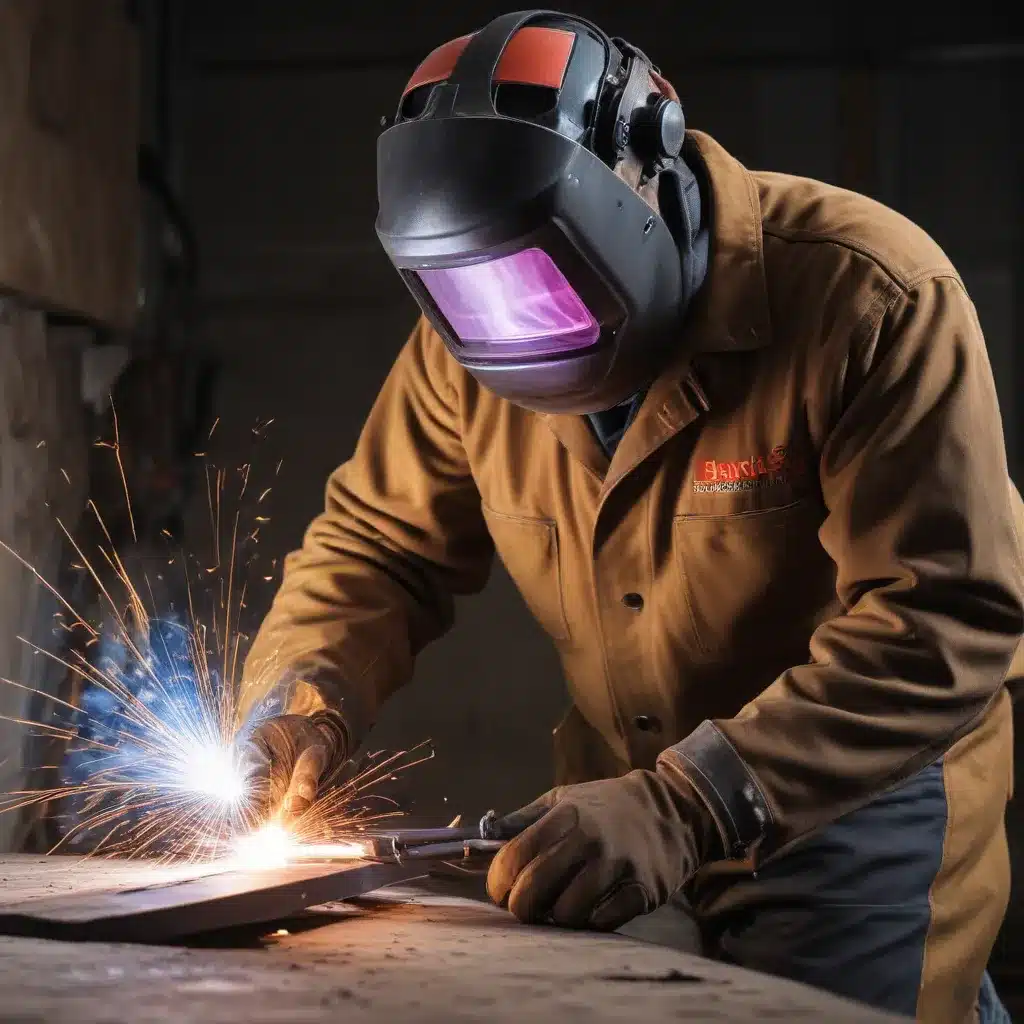
As an experienced welder and metal fabricator, I’ve seen my fair share of progress in the industry. From the days of old-school welding techniques to the modern era of advanced technologies, the world of metalworking has come a long way. But one aspect that has always been at the forefront of my mind is the importance of safety.
In this age of smart personal protective equipment (PPE), I’m excited to share my insights on how the latest advancements in safety gear are revolutionizing the way we approach welding and fabrication. It’s no longer just about donning the traditional gear and hoping for the best; today, we have access to innovative solutions that can truly safeguard our well-being.
The Evolution of Safety Gear
When I first started out in this field, safety gear was a bit of an afterthought for many. We’d throw on a pair of gloves, a welding jacket, and a basic face shield, and consider ourselves protected. But as the years passed, I’ve seen a remarkable shift in the industry’s approach to safety.
Manufacturers have recognized the importance of keeping workers safe, and they’ve poured their efforts into developing PPE that not only meets industry standards but also leverages the power of emerging technologies. Gone are the days of bulky, uncomfortable gear; today’s smart PPE is designed with the wearer’s comfort and convenience in mind.
Smart PPE: Unleashing the Power of Connectivity
One of the most exciting developments in the world of welding safety is the rise of smart PPE. These innovative solutions go beyond the traditional protective gear, integrating advanced sensors and connectivity features to create a truly personalized safety experience.
Imagine a pair of gloves that can detect the presence of hazardous chemicals and instantly alert you to the danger. Or a welding jacket that can monitor your vital signs and notify your supervisor if your body temperature or heart rate spikes unexpectedly. These are just a few examples of the incredible capabilities of smart PPE.
Real-Time Hazard Identification and Response
One of the key benefits of smart PPE is its ability to identify potential hazards in real-time and communicate that information to the wearer. Using a network of strategically placed beacons and sensors, the system can map out a worksite and establish designated safety zones with specific PPE requirements.
As a welder, I can’t tell you how many times I’ve been caught off guard by a sudden change in the work environment. With smart PPE, those unexpected dangers can be mitigated before they even occur. Imagine being notified that you’re entering a chemically hazardous area and being instructed to don the appropriate protective gear before even setting foot in the zone. It’s a game-changer for workplace safety.
Empowering the Workforce
But smart PPE isn’t just about keeping workers safe; it’s also about empowering them to take an active role in their own safety and the safety of their colleagues. By incorporating worker-powered reporting features, these advanced systems allow employees to identify and report potential hazards, creating a truly connected safety community.
I’ve always been a firm believer in the power of worker engagement when it comes to safety. After all, who knows the work environment better than those who are immersed in it day in and day out? With smart PPE, we can tap into that invaluable expertise and turn our workers into safety champions, ensuring that every risk is identified and addressed.
The Cost-Effective Solution
One of the common misconceptions about smart PPE is that it’s an expensive investment, but the truth is, the long-term benefits far outweigh the initial costs. By reducing the risk of workplace accidents and injuries, these systems can actually save companies a significant amount of money in the long run.
Think about it: the cost of a single workplace injury, from lost productivity to medical expenses and worker’s compensation claims, can be staggering. With smart PPE, we can proactively prevent these incidents, ultimately boosting the bottom line while prioritizing the well-being of our workforce.
Embracing the Future of Welding Safety
As I look toward the future of welding and fabrication, I’m genuinely excited about the prospects of smart PPE. This technology has the power to transform our industry, making it safer, more efficient, and more empowering for the men and women who dedicate their careers to the art of metalworking.
Gone are the days of relying solely on our senses and past experiences to navigate the potential hazards of the job. With smart PPE, we have the ability to tap into a wealth of real-time data, guiding our actions and decisions with pinpoint accuracy. It’s a future that I’m eager to embrace, and I encourage my fellow welders and fabricators to do the same.
Conclusion
In the ever-evolving world of welding and metal fabrication, safety must remain a top priority. But with the advent of smart PPE, we now have access to powerful tools that can significantly enhance our level of protection. From real-time hazard identification to worker-powered reporting, these innovative solutions are paving the way for a safer, more connected industry.
As an experienced welder and fabricator, I’ve seen firsthand the impact that smart PPE can have on the workplace. It’s not just about the latest gadgets and gizmos; it’s about empowering our workforce, reducing the risk of accidents, and ultimately, creating a culture of safety that permeates every aspect of our work.
So, let’s embrace the future of welding safety together. By leveraging the power of smart PPE, we can elevate our craft, protect our fellow workers, and ensure that the legacy of metalworking continues to thrive for generations to come. After all, at the end of the day, our safety is the foundation upon which everything else is built.
If you’re interested in learning more about the latest advancements in welding safety, I encourage you to visit https://theweldfab.com/. There, you’ll find a wealth of information and resources to help you stay informed and equipped for the challenges of the modern fabrication industry.


